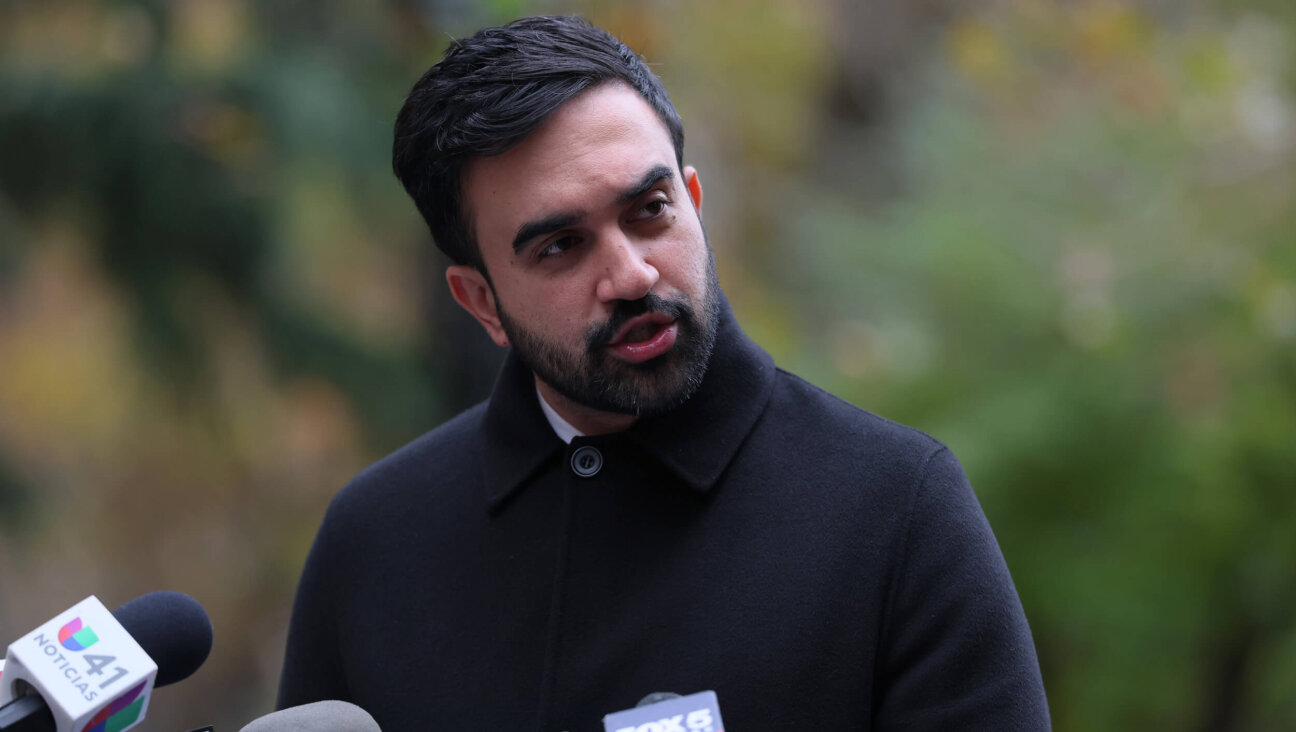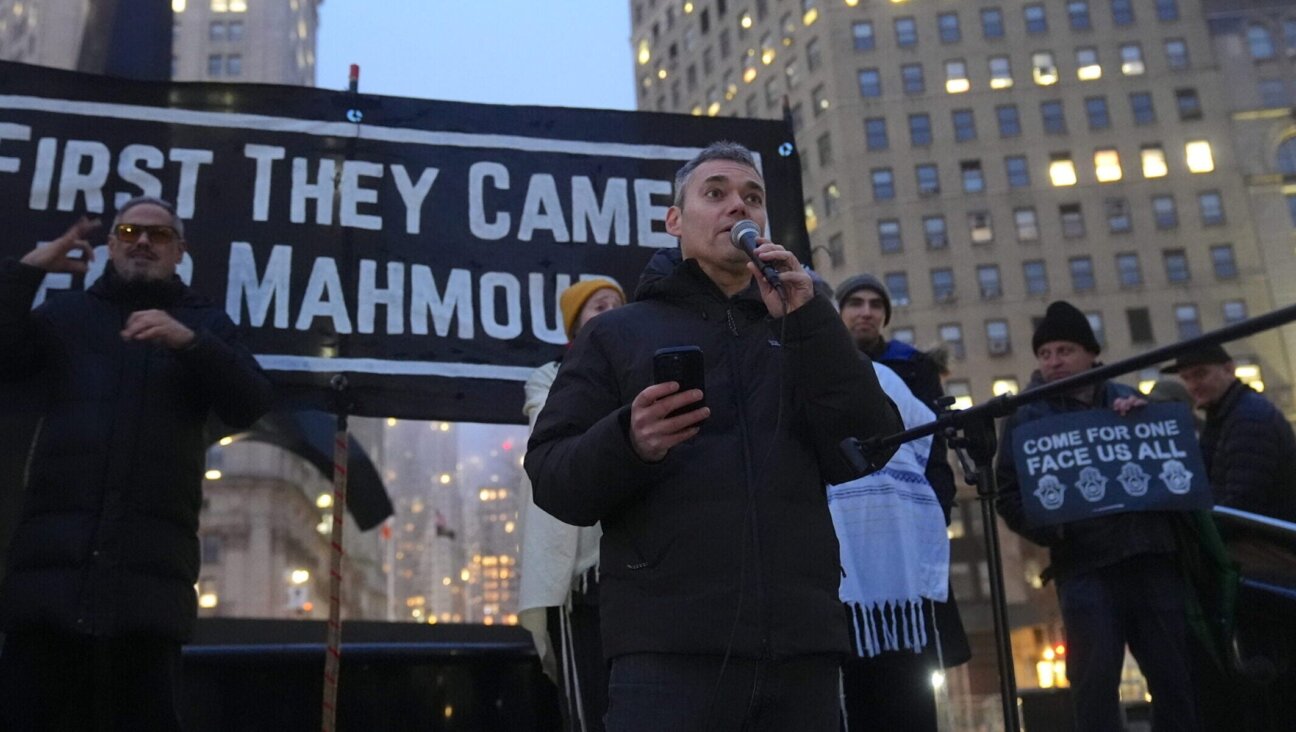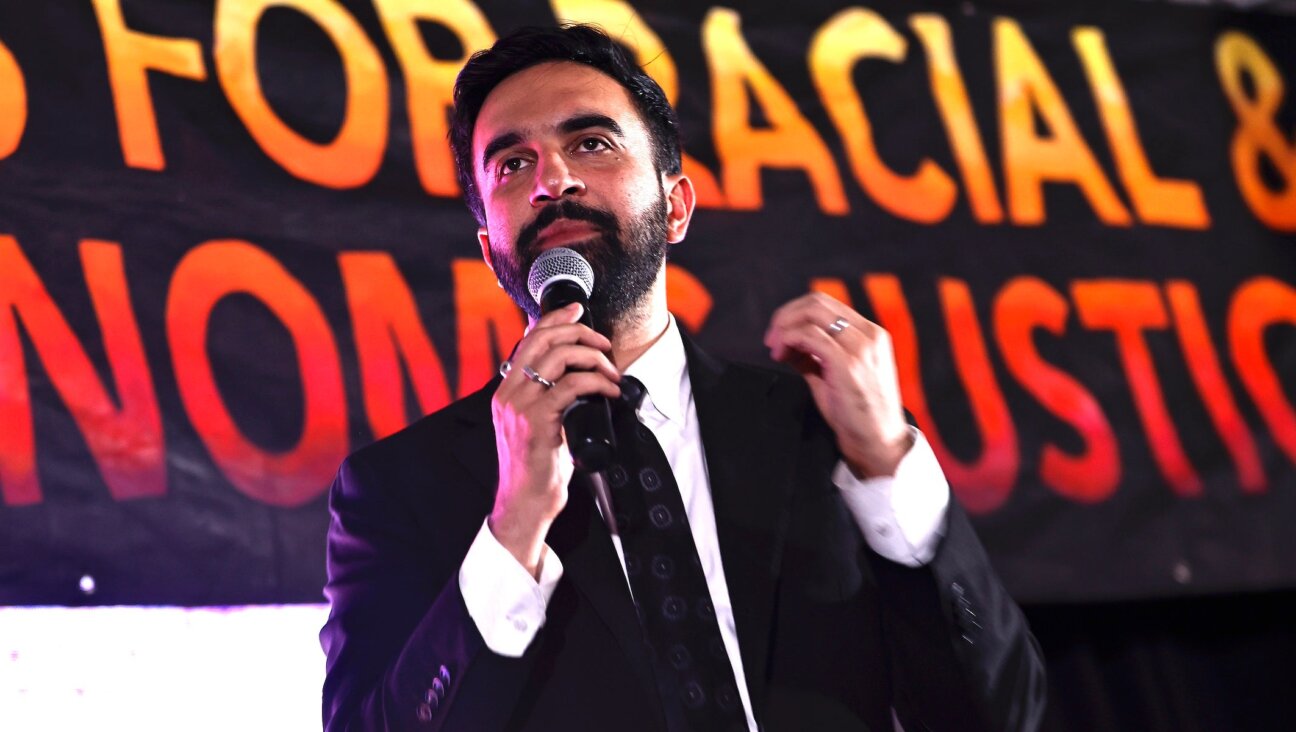The growing panic about antisemitism isn’t a reflection of reality
Yes, antisemitism is up — but prominent voices are confusing protest with bigotry

Are fears about rising antisemitism out of proportion to the actual facts? Photo by Spencer Platt/Getty Images
American Jews are being whipped into a panic about antisemitism.
There is no doubt that incidents of antisemitism have increased since Oct. 7. But prominent voices in the American Jewish community are making it harder to fight. They have mistaken political protest — however misguided — for bigotry, conflated anti-Zionism and antisemitism, and exaggerated the crisis on the far left while ignoring the far greater one on the far right.
I do not question the motivations of those who have spoken out against antisemitism in this way. We are all in pain, and we all want a world in which people of all backgrounds can live their lives in safety. But the rampant hyperbole, confusion, and both-sidesing of this present moral panic are making it harder, not easier, to respond effectively.
Antisemitism is rising because of a brutal war
For example, consider two widely circulated recent essays in The Atlantic, “The Golden Age of American Jews is Ending,” by Franklin Foer, and “Why The Most Educated People in America Fall for Antisemitic Lies,” by Dara Horn. Both attribute the rise in antisemitism to the resurgence of an ancient, timeless hatred, rather than the obvious proximate cause: a brutal war, which is producing images of unthinkable horror to be streamed daily on social media.
In Foer’s 11,000-word piece, few sentences mention the ongoing catastrophe in Gaza, where more than an estimated 32,000 Palestinians have been killed so far. “I don’t want to dismiss the anger that the left feels about the terrible human cost of the Israeli counterinvasion of Gaza, or denounce criticism of Israel as inherently antisemitic — especially because I share some of those criticisms,” he writes.
But that is, effectively, exactly what he does, ascribing the increase in antisemitism to anti-liberal trends in American culture, and describing antisemitism as “a mental habit, deeply embedded in Christian and Muslim thinking, stretching back at least as far as the accusation that the Jews murdered the son of God.” The war is barely even an inciting incident.
Horn, like Foer, largely dismisses concerns about the war. The word “Gaza” only appears six times in her essay. Yes, she writes, there are “the many legitimate concerns about Israel’s policies toward Palestinians and the many legitimate concerns about Israel’s current war in Gaza.” But those “cannot explain these eliminationist chants and slogans” — e.g. “Palestine from River to Sea” — “the glee with which they are delivered, the lawlessness that has accompanied them, or the open assaults on Jews.”
There are numerous omissions in this short passage: How many protests are gleeful? (Few that I’ve seen.) What percentage are lawless? Is “‘river to the sea” always ‘eliminationist,’ despite what many pro-Palestine voices insist?
Most significantly, though, both Horn and Foer write as if this is the first time in history that a war or catastrophe has provoked bigotry. But this is always the case. Just as Islamophobia rose after 9/11, and just as anti-Asian hate rose with the onset of the pandemic, so antisemitism is rising now. One could even say the same about anti-German and anti-Japanese stereotypes in the 1940s.
None of this is to excuse these spikes in bigotry, or to deny that the bigotry exists and is dangerous. It is only to note that the most obvious explanation for the current eruption is not a grand meta-narrative of American or European history, but rage at an ongoing war in which Israel’s conduct has received widespread international condemnation.
No, anti-Zionism is not antisemitism
Second, the moral panic conflates legitimate anti-Zionism with illegitimate antisemitism.
Foer’s essay begins with a harrowing account of a Jewish high school student in Berkeley, California, who was “scared” by “a planned ‘walkout’ to protest Israel.” I do not doubt that this student was scared. But what actually happened? A misguided political protest, along with unsubstantiated rumors of “phrases shouted in the hallways, carrying intimations of violence.” It is not antisemitism whenever Jewish people are upset by anti-Israel actions or statements.
Foer also reports secondhand accounts of Jewish students at other schools in the Bay Area being targeted and harassed in ways that are clearly antisemitic. But he lumps these incidents together as if they are the same, which they are not. Protesting against Israel, however misguided or disturbing, is not antisemitic; harassing Jews is.
Foer asserts, without support, that the left “espouses a blithe desire to eliminate the world’s only Jewish-majority nation … valorizes the homicidal campaign against its existence, and seeks to hold members of the Jewish diaspora to account for the sins of a country they don’t live in.” Notice the elisions: Foer blends together anti-Zionism, support for a “homicidal campaign,” and targeting Jews. (Even the caricature of anti-Zionism is incorrect, as many on the left support a democratic state where Jews would still be a majority, but all would have equal rights.)
This conflation of antisemitism and anti-Zionism is far greater than a few articles. As reported in the Forward, after Oct. 7, the Anti-Defamation League changed its criteria to define a much broader swath of anti-Zionist activity as antisemitic; anti-Zionist protests account for 1,317 of the 3,000-odd “antisemitic” incidents the organization tracked in the three months after Oct. 7. As Forward reporter Arno Rosenfeld wrote, “a large share of the incidents appear to be expressions of hostility toward Israel, rather than the traditional forms of antisemitism that the organization has focused on in previous years.”
The extremism of some left-wing responses to the war is indeed troubling. I agree with Foer’s dismay that “a disconcertingly large number of Israel’s critics on the left did not … share that vision of peaceful coexistence, or believe Jews had a right to a nation of their own.” But are they antisemitic? And what about Jewish anti-Zionists (many of whom are friends of mine) — are we really to believe that they are all trapped in some neurosis of self-hatred? Or do they have a political view to which many of us object?
I am a progressive Zionist. Even if the dream seems dim today, I believe in a two-state solution with justice for Palestine and security for Israel. But while Foer’s language of “a nation of their own” sounds benign in principle, in practice, it has meant a nation that displaces another people and denies its 5 million members basic civil rights. Moreover, an entire generation of American progressives has grown up during a period in which Israel’s right-wing governments have successfully undermined any efforts toward peace and coexistence. It is not antisemitic to oppose this. For many people, Jewish and non-Jewish alike, it is just.
Right-wing antisemitism remains the greatest threat
The moral panic regarding antisemitism also overlooks an essential truth: that although antisemitism on the left is real, and arguably escalating, it still pales in comparison to antisemitism on the right.
After a shocking upsurge during the Trump administration, right-wing antisemitism has now reached unprecedented proximity to power. One particularly serious example: Mark Robinson, the Republican candidate for governor of North Carolina. Robinson is an antisemite and Holocaust denier. In 2017, he wrote that “there is a REASON the liberal media fills the airwaves with programs about the NAZI and the ‘6 million Jews’ they murdered.” (Robinson is also a sexist, homophobe, and Islamophobe.)
This man isn’t a misguided high school teacher or student activist. He may become the next chief executive of the ninth most populous state in our union. He’s been highly praised by Donald Trump. This is extreme antisemitism at the highest levels of the GOP.
And, of course, there’s Elon Musk, who despite his Auschwitz apology tour has platformed — and personally reposted — hardcore antisemites, including Trump. Not to mention Kanye West, now known as Ye, whose public antisemitism has aligned with a sharp right-wing political turn, and whose most recent album went to the top of the charts.
No one accused of antisemitism on the far left has a platform comparable to either of theirs. Again, none of this is to excuse the presence or tolerance of antisemitism on the left — only to put it in perspective.
Yet in Foer’s telling, they are merely two manifestations of the same phenomenon. “In the era of perpetual crisis,” Foer writes, “a version of this narrative kept recurring: a small elite — sometimes bankers, sometimes lobbyists — maliciously exploiting the people. Such narratives helped propel Occupy Wall Street on the left and the Tea Party on the right.”
But wait a minute. Occupy’s narrative is accurate, but the Tea Party’s is not. Occupy rails against the 1% — they exist. The Tea Party rails against imagined “elites” — now imagined, as part of the QAnon conspiracy theory, as cabals of globalist pedophiles. And when a single protester in Zuccotti Park raised an antisemitic banner, people intervened, and the movement reaffirmed its opposition to antisemitism. There is no equivalence here.
Likewise, Foer claims that “America’s ascendant political movements — MAGA on one side, the illiberal left on the other — would demolish the last pillars of the consensus that Jews helped establish. They regard concepts such as tolerance, fairness, meritocracy, and cosmopolitanism as pernicious shams.” Really? Rightly or wrongly, the left thinks they’re fighting for fairness and tolerance — or at least against starving a million children as part of a brutal war. The right is fighting for an American nationalist ethno-state. There is simply no symmetry here.
Terrified, tribalistic and isolated
The moral panic over antisemitism isn’t just factually unsound. It’s helping make American Jews more isolated and paranoid.
It’s obvious that American Jews are feeling disoriented, terrified and traumatized by Oct. 7, as well as by much of the world’s mixed response to that day’s horrific violence. The trauma of the last several months — experienced, in various forms, by Jews, Muslims, progressives and many others — has contributed to the degeneration of our public discourse on the war.
But our moral panic is at once born of this trauma and making it worse. It has caused Jews to become even more terrified and tribalistic. It has undermined our solidarity with other vulnerable groups at precisely the time at which we are threatened by the nationalist right. And it has fed the illiberal campaigns of right-wing culture warriors, who have preyed on American Jewish fears to further their own agendas. We are being fed a diet of hyperbole and misinformation, and we are reacting out of fear.
To be sure, some progressives responded abominably to Oct. 7, and continue to use irresponsible, incendiary rhetoric about Israel. There are outrageous things happening on some college campuses. But let’s not lose the thread here. The real crisis is not leftists on campus but white nationalists, insurrectionists, election deniers, science deniers and conspiracy theorists seizing two if not three branches of the federal government. That is the Titanic. College activists are the string quartet playing on the deck.
Finally, the consequences of this fatalistic view that antisemitism is everywhere, and that it can never be eradicated, are dark indeed. Professor Shaul Magid has called it “Judeo-Pessimism,” taking a cue from “Afro-Pessimism,” a view that holds that racism can never be eradicated.
For Judeo-Pessimists, antisemitism is a kind of immortal, recurring hatred that simply is part of Western culture; again, Foer describes it as a “mental habit, deeply embedded in Christian and Muslim thinking.” As such, antisemitism can be fought but never destroyed.
The natural endpoint of such a view is perpetual paranoia, together with an extreme form of right-wing Zionism. It tells us that we cannot trust the international community, and can only trust Jewish strength. It dismisses human rights concerns, since the oppression of our enemies is the regrettable price of Jewish survival. Because if we are always and everywhere oppressed, then the Jewish future lies not in engagement with wider society, but in our strength in opposition to it.
This is a bleak vision, and reflective of the trauma which gave birth to it.
To be sure, there are good reasons to be scared right now. But the human capacity for freedom lies in our ability to transcend that fear — to recognize it and not be controlled by it. We can recognize that the better angels of our nature are not naive, but are wiser and more trustworthy than our passions, even when they are felt strongly. Moral panic is not the way forward.














